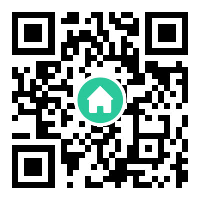Understanding Telegram Multiple Devices: A Seamless Communication Experience
Telegram multiple devices functionality has revolutionized how users interact with the platform, offering unparalleled flexibility in an era where digital multitasking is the norm. Unlike many messaging apps that restrict users to a single active device, Telegram allows seamless synchronization across smartphones, tablets, desktops, and even web browsers. This feature ensures that messages, media, and chats remain accessible regardless of the device in use, making it a preferred choice for individuals and professionals who demand constant connectivity.
The Technical Backbone of Multi-Device Support
Telegram’s ability to support multiple devices simultaneously stems from its cloud-based architecture. All messages and files are stored securely in the cloud, eliminating the need for local backups or manual transfers. When a user logs into a new device, the app synchronizes data in real-time, ensuring continuity. This approach contrasts sharply with apps like WhatsApp, which rely on a primary device to encrypt and relay messages. Telegram’s decentralized model not only enhances accessibility but also reduces dependency on a single gadget, a critical advantage in scenarios where devices may be lost or damaged.
Security in a Multi-Device Environment
One common concern with multi-device support is security. Telegram addresses this through end-to-end encryption (E2EE) for its “Secret Chats” feature, which remains device-specific to prevent unauthorized access. For regular chats, the platform employs client-server encryption, ensuring data protection during transmission and storage. Additionally, users can monitor active sessions and terminate suspicious connections remotely via the “Privacy and Security” settings. This layered security framework allows Telegram to balance convenience with robust privacy safeguards, even when operating across multiple devices.

Use Cases: Who Benefits Most?
Telegram multiple devices functionality caters to diverse user needs. Professionals juggling work and personal communication can separate accounts on different devices without compromising accessibility. Content creators and community managers benefit from managing channels and groups across tablets and desktops for efficient moderation. Travelers, too, appreciate the ability to switch between a smartphone and a laptop without missing critical updates. Furthermore, families sharing devices can maintain individual accounts, avoiding the chaos of mixed conversations. This versatility underscores Telegram’s commitment to adaptability in a multi-device world.
Challenges and Future Developments
Despite its advantages, Telegram’s multi-device feature faces challenges. Some users report occasional synchronization delays, particularly when using older devices or unstable internet connections. Additionally, the lack of E2EE for group chats and cloud-based messages remains a point of contention among privacy advocates. However, Telegram’s development team has consistently rolled out updates to address these issues, with rumors of expanded E2EE coverage in future releases. As technology evolves, the platform is poised to refine its multi-device experience, potentially integrating AI-driven optimizations and cross-platform enhancements.
Conclusion: Redefining Connectivity
Telegram multiple devices support has set a new standard for modern communication, blending accessibility, security, and versatility. By empowering users to stay connected across gadgets without sacrificing privacy, the platform has carved a niche in the competitive messaging landscape. As digital lifestyles grow increasingly complex, Telegram’s commitment to innovation ensures it will remain a vital tool for millions worldwide, adapting to emerging needs while maintaining the simplicity that defines its user experience.












